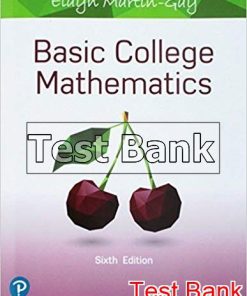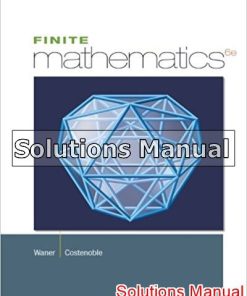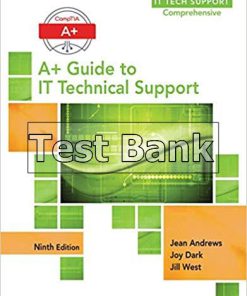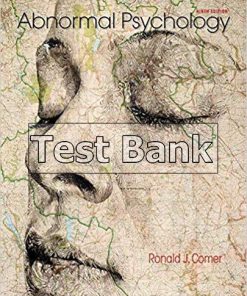Chapter 1 Problem Solving: Strategies and Principles
1.1 Problem Solving
1.2 Inductive and Deductive Reasoning
1.3 Estimation
Chapter 2 Set Theory: Using Mathematics to Classify Objects
2.1 The Language of Sets
2.2 Comparing Sets
2.3 Set Operations
2.4 Survey Problems
2.5 Looking Deeper: Infinite Sets
Chapter 3 Logic: The Study of What’s True or False or Somewhere in Between
3.1 Statements, Connectives, and Quantifiers
3.2 Truth Tables
3.3 The Conditional and Biconditional
3.4 Verifying Arguments
3.5 Using Euler Diagrams to Verify Syllogisms
3.6 Looking Deeper: Fuzzy Logic
Chapter 4 Graph Theory (Networks): The Mathematics of Relationships
4.1 Graphs, Puzzles, and Map Coloring
4.2 The Traveling Salesperson Problem
4.3 Directed Graphs
4.4 Looking Deeper: Scheduling Projects Using PERT
Chapter 5 Numeration Systems: Does It Matter How We Name Numbers?
5.1 The Evolution of Numeration Systems
5.2 Place Value Systems
5.3 Calculating in Other Bases
5.4 Looking Deeper: Modular Systems
Chapter 6 Number Theory and the Real Number System: Understanding the Numbers All Around Us
6.1 Number Theory
6.2 The Integers
6.3 The Rational Numbers
6.4 The Real Number System
6.5 Exponents and Scientific Notation
6.6 Looking Deeper: Sequences
Chapter 7 Algebraic Models: How Do We Approximate Reality?
7.1 Linear Equations
7.2 Modeling with Linear Equations
7.3 Modeling with Quadratic Equations
7.4 Exponential Equations and Growth
7.5 Proportions and Variation
7.6 Modeling with Systems of Linear Equations and Inequalities
7.7 Looking Deeper: Dynamical Systems
Chapter 8 Consumer Mathematics: The Mathematics of Everyday Life
8.1 Percents, Taxes, and Inflation
8.2 Interest
8.3 Consumer Loans
8.4 Annuities
8.5 Amortized Loans
8.6 Looking Deeper: Annual Percentage Rate
Chapter 9 Geometry: Ancient and Modern Mathematics Embrace
9.1 Lines, Angles, and Circles
9.2 Polygons
9.3 Perimeter and Area
9.4 Volume and Surface Area
9.5 The Metric System and Dimensional Analysis
9.6 Geometric Symmetry and Tessellations
9.7 Looking Deeper: Fractals
Chapter 10 Apportionment: How Do We Measure Fairness?
10.1 Understanding Apportionment
10.2 The Huntington-Hill Apportionment Principle
10.3 Other Paradoxes and Apportionment Methods
10.4 Looking Deeper: Fair Division
Chapter 11 Voting: using Mathematics to make Choices
11.1 Voting Methods
11.2 Defects in Voting Methods
11.3 Weighted Voting Systems
11.4 Looking Deeper: The Shapley-Shubik Index
Chapter 12 Counting: Just How many Are There?
12.1 Introduction to Counting Methods
12.2 The Fundamental Counting Principle
12.3 Permutations and Combinations
12.4 Looking Deeper: Counting and Gambling
Chapter 13 Probability: What Are the Chances?
13.1 The Basics of Probability Theory
13.2 Complements and Unions of Events
13.3 Conditional Probability and Intersections of Events
13.4 Expected Value
13.5 Looking Deeper: Binomial Experiments
Chapter 14 Descriptive Statistics: Making Sense of the Data
14.1 Organizing and Visualizing Data
14.2 Measures of Central Tendency
14.3 Measures of Dispersion
14.4 The Normal Distribution
14.5 Looking Deeper: Linear Correlation
Appendix A
Answers to Quiz Yourself Problems
Answers to Exercises
Credits
Index














